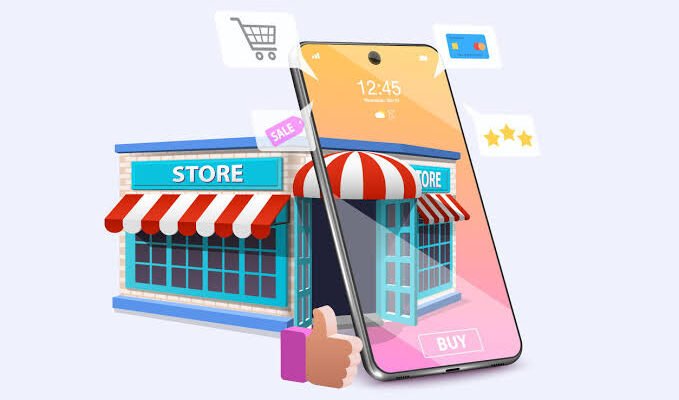Introduction
In today’s digital age, starting an online store has become one of the most lucrative and flexible business opportunities. With the world moving toward online shopping, now is the perfect time to establish your own digital storefront. But how exactly do you get started? How do you make and run an online store that stands out, attracts customers, and generates profit?
This comprehensive guide will walk you through the essential steps to create, launch, and successfully manage your online store, including tips on product selection, website creation, marketing strategies, and customer service.
Why Start an Online Store?
Before diving into the details of how to make and run an online store, it’s essential to understand why e-commerce is such a powerful business model. Here are a few key reasons why starting an online store is a great idea:
- Low Startup Costs: Unlike traditional brick-and-mortar stores, online stores don’t require a physical location, reducing overhead costs.
- Global Reach: You can sell to customers worldwide without geographical limitations.
- 24/7 Availability: Your online store operates round the clock, providing continuous opportunities for sales and growth.
- Flexibility: Whether you want to sell handmade goods, dropshipping products, or digital downloads, the options are endless.
Now, let’s explore the steps you need to take to create and run your online store.
1. Choose Your Niche and Products
Before you start building your online store, you need to determine what products you will sell. Choosing a niche helps you target a specific audience and stand out from the competition. Here’s how to decide:
- Research Market Trends: Use tools like Google Trends, Amazon Best Sellers, and social media platforms to identify what products are currently in demand.
- Passion and Expertise: Consider selling products related to something you’re passionate about or have expertise in. This will make it easier to market and manage your business.
- Profitability: Ensure the products you choose have a good profit margin and are priced competitively.
Once you’ve decided on your niche, start sourcing products. You can either:
- Create your own products: If you’re selling handmade goods or unique designs, you’ll have more control over quality and branding.
- Use dropshipping: With dropshipping, you don’t have to handle inventory. Instead, a third party fulfills the orders directly to customers.
- Purchase wholesale: Buy products in bulk from suppliers and resell them at a markup.
2. Set Up Your Online Store
Once you’ve chosen your products, it’s time to create your online store. The process of how to make and run an online store begins with building the website where your customers will browse and purchase.
a. Select an E-commerce Platform
There are several e-commerce platforms to choose from, depending on your technical skills and business needs. Popular options include:
- Shopify: Ideal for beginners, with easy-to-use tools, templates, and payment integration.
- WooCommerce: A WordPress plugin that offers flexibility for those familiar with WordPress.
- BigCommerce: A good option for scaling businesses with advanced features.
- Wix: A drag-and-drop website builder with e-commerce functionality.
Each platform has its own pros and cons, so research the best one for your specific needs before making a choice.
b. Choose a Domain Name
Your domain name is the address where customers will find your store online. Make sure it’s easy to remember, brandable, and relevant to your business. Platforms like Namecheap and GoDaddy offer domain registration services.
c. Design Your Website
The design of your website is crucial to attracting and retaining customers. Choose a clean, professional design that’s easy to navigate. Most e-commerce platforms offer customizable themes, or you can hire a web designer if you want something unique. Here are some design tips:
- User-friendly navigation: Make it easy for customers to find products by using categories and filters.
- Mobile responsiveness: Ensure your website works seamlessly on smartphones and tablets, as a significant portion of shopping is done on mobile devices.
- High-quality images: Use clear, high-resolution product photos to give customers a good view of what they’re buying.
3. Set Up Payment and Shipping Options
A smooth and secure payment process is key to a successful online store. Your e-commerce platform will usually integrate with popular payment gateways such as PayPal, Stripe, and Square. Make sure to offer multiple payment methods to cater to different customer preferences.
a. Payment Methods
- Credit/Debit Cards: The most common payment method.
- PayPal: A popular and secure option for online payments.
- Apple Pay/Google Pay: Mobile payment options that simplify the checkout process.
b. Shipping
Decide on your shipping strategy, which will depend on your product and business model. You can either:
- Offer free shipping: This can encourage more sales but reduce your profit margins.
- Charge a flat rate: Simplifies shipping costs for your customers.
- Use real-time carrier rates: This adjusts the shipping cost based on the buyer’s location.
4. Optimize for SEO
To ensure your online store ranks well in search engines and attracts organic traffic, you must focus on search engine optimization (SEO). Here’s how you can optimize your store:
a. Keyword Research
Identify relevant keywords that potential customers might use to find your products. Tools like Google Keyword Planner and Ahrefs can help you find high-traffic keywords related to your niche.
b. On-page SEO
- Product descriptions: Include your target keywords in product titles, descriptions, and images (alt text).
- Meta tags: Add optimized meta titles and descriptions for each page.
- Internal linking: Link related products and categories to help users discover more items and reduce bounce rates.
c. Content Marketing
Create valuable content like blogs, videos, and guides to drive traffic to your store. Content marketing not only helps improve SEO but also builds your brand’s credibility.
5. Launch and Market Your Store
After building and optimizing your online store, it’s time to launch! However, just launching isn’t enough; you need to market your store effectively.
a. Social Media Marketing
Promote your store on social media platforms like Instagram, Facebook, Pinterest, and TikTok. Use visually appealing images, promotions, and engaging content to reach your target audience.
b. Email Marketing
Collect customer emails through sign-up forms and offer incentives like discounts or exclusive content. Send regular newsletters, product updates, and abandoned cart reminders to keep your audience engaged.
c. Paid Advertising
Consider running paid ads on Google, Facebook, or Instagram to target specific demographics. Paid advertising can drive traffic quickly and boost sales, especially during the early stages of your store’s life.
6. Focus on Customer Service
Great customer service can set your online store apart from the competition. Make it easy for customers to contact you and address their concerns promptly. Here are some tips:
- Live chat support: Provides immediate assistance to customers browsing your store.
- Clear return policy: Ensure customers know how to return items if needed.
- Customer reviews: Encourage satisfied customers to leave positive reviews, which can build trust with potential buyers.
Conclusion
Learning how to make and run an online store is an exciting venture, but it requires careful planning, strategy, and execution. From selecting the right niche and products to optimizing for SEO and implementing effective marketing tactics, the journey to success involves multiple steps.
By following these best practices and staying committed to providing an excellent customer experience, your online store can thrive in the competitive e-commerce landscape. With the right mindset and tools, you can turn your online store into a profitable and sustainable business.




